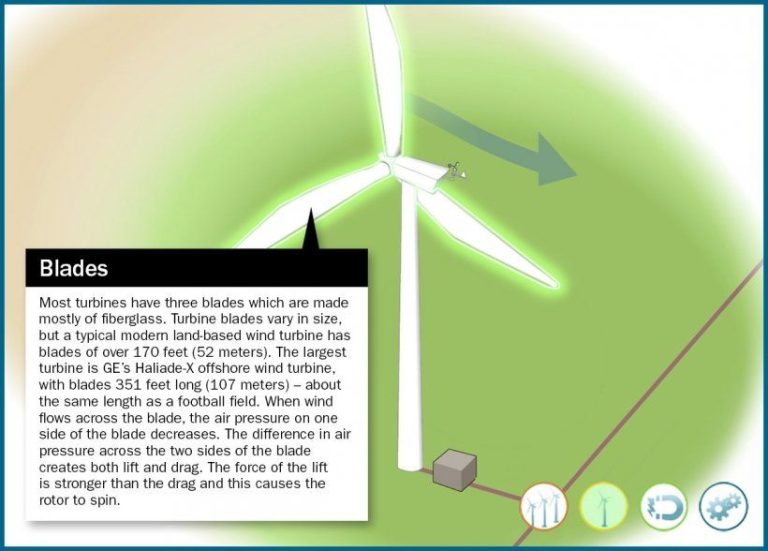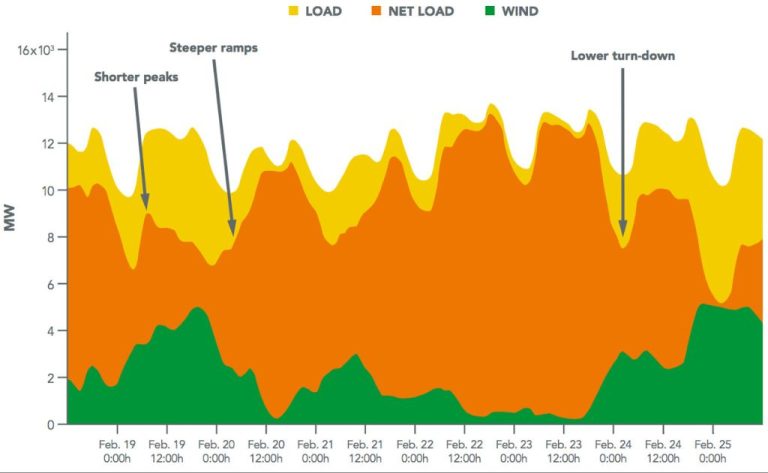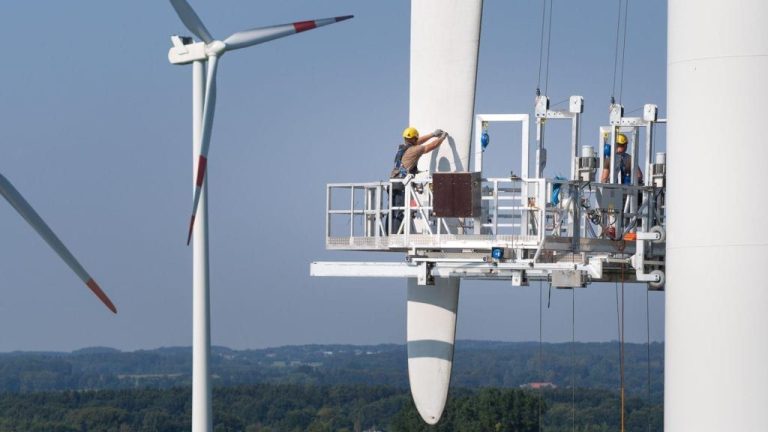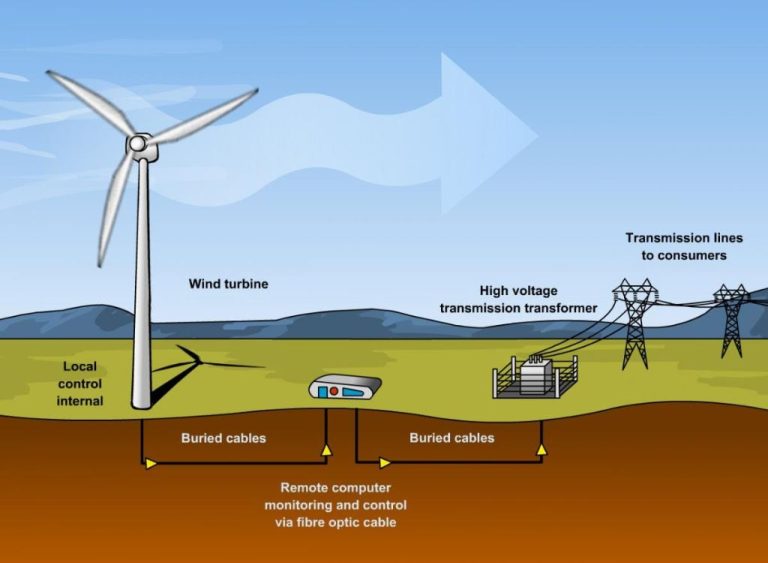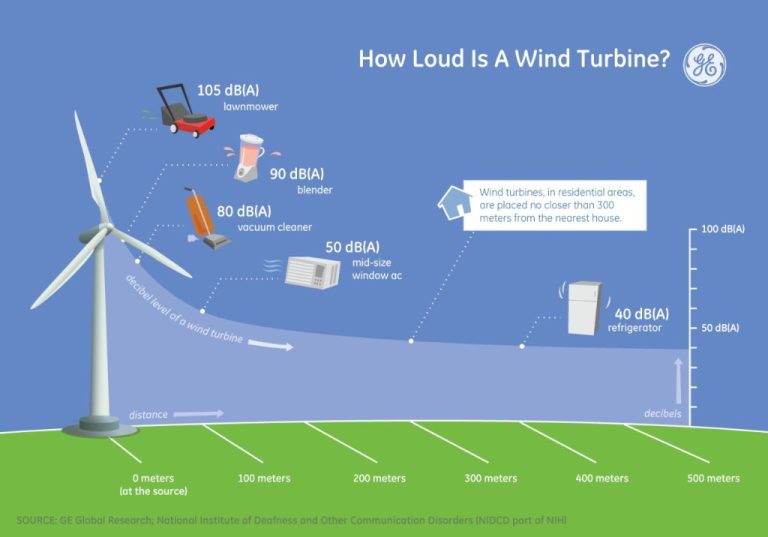How Much Do The Wind Turbines Cost?
Wind turbines are an increasingly popular source of renewable energy around the world. Their costs can vary substantially depending on the size, location, and components used. This article will provide an overview of the main factors that contribute to wind turbine costs, including the turbine components, size, tower type, location, land acquisition, labor, and maintenance. We’ll break down the total cost of installing a wind turbine and discuss the range of costs based on different configurations and sites. Understanding the costs involved with wind turbines allows energy consumers, utilities, and governments to make informed decisions about investing in this technology to meet renewable energy goals.
Turbine Components
The major components of a wind turbine include the tower, rotor blades, gearbox, generator, nacelle, and other electrical components. Each part plays a crucial role and accounts for a significant portion of the overall turbine cost.
The tower supports the structure and accounts for about 15-20% of total costs. Towers are typically made of tubular steel and can range from 250-350 feet tall for large utility-scale turbines. Taller towers allow turbines to access stronger winds but are more expensive to manufacture and install.
The rotor blades capture the wind energy. Blade costs make up around 20% of the total turbine price. The most common utility-scale turbines have 3 fiberglass blades spanning 120-170 feet in length. Larger rotors can harness more wind power, but longer blades are pricier to produce and transport.
The gearbox converts the slow rotations of the rotor into faster rotations to run the generator. Gearboxes represent about 8% of wind turbine costs. They contain complex gears and bearings and require regular maintenance and replacement of parts.
The generator uses magnetic induction to convert the mechanical power into electrical power. Generators account for around 8% of wind turbine costs. Permanent magnet generators are more reliable and efficient than traditional wound rotor generators.
The nacelle sits atop the tower and contains all the generating components. It makes up about 7-9% of total wind turbine costs. Other electrical system components like inverters, transformers, and cables account for around 15% of the overall price.
According to the National Renewable Energy Laboratory, the rotor (including blades), drivetrain (including gearboxes), tower, and electrical system represent the largest shares of wind turbine costs (https://www.nrel.gov/docs/fy07osti/40566.pdf). Advances in materials and designs aim to make these components more durable and cost-effective.
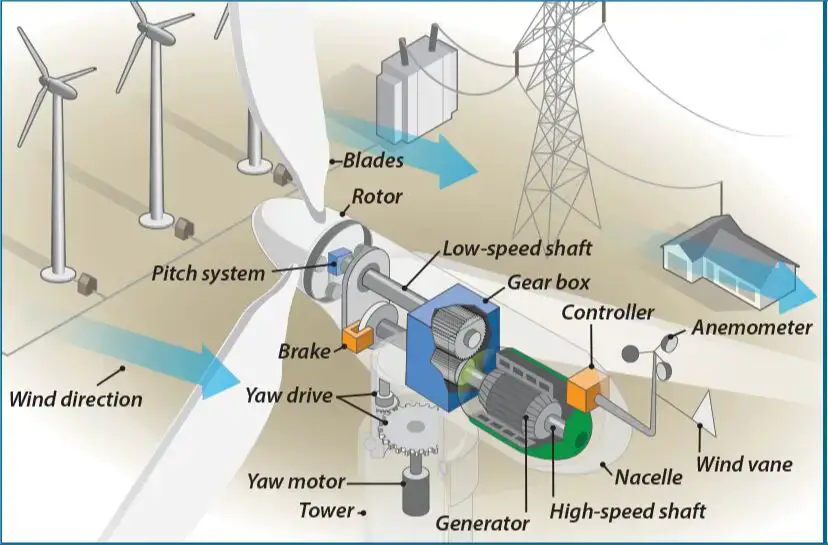
Turbine Size
Larger wind turbines generate more energy and are more cost-effective, but have higher upfront costs. According to the U.S. Department of Energy, “Higher capacity turbines mean that fewer turbines are needed to generate the same amount of energy across a wind plant—ultimately leading to lower costs” (1). Experts surveyed by the Lawrence Berkeley National Laboratory agreed, stating “The increasing size of wind turbines is a core contributor to lower LCOE” (2).
The size of wind turbine blades has increased dramatically over the past 30 years, with average rotor diameters growing from around 15 meters in the 1980s to over 150 meters today. Longer blades capture more wind energy, but they are also more expensive to manufacture, transport, and install. Though larger turbines have higher upfront capital costs, they produce electricity at a lower cost per kWh over their lifetime.
Tower Type
The tower is a major cost component of a wind turbine. There are two main types of wind turbine towers: tubular steel and lattice.
Tubular steel towers consist of rolled steel plates that are welded together to form a hollow cylindrical structure. They are the most common type of tower used today for large utility-scale wind turbines. Tubular steel towers provide strength, stability and corrosion resistance at a lower cost than lattice towers.
Lattice towers are open framed structures built from a crisscross steel lattice. They were more commonly used on older, smaller wind turbines. Lattice towers require more steel overall to build but are cheaper to transport because they can be disassembled into sections.
Tubular steel towers have become more cost-effective as wind turbines have increased in size and height. The tubular tower design provides the strength needed to support larger turbines while minimizing material use and costs. Tubular steel towers now range from 200 feet (60 meters) up to 300 feet (90 meters) for today’s large megawatt-scale wind turbines.
In terms of overall costs, tubular steel towers are generally more economical for utility-scale wind farms than lattice towers. The tower accounts for 20-25% of the total installed cost of a megawatt-scale turbine. So choosing the optimal tower design is an important consideration in controlling project costs.
Location
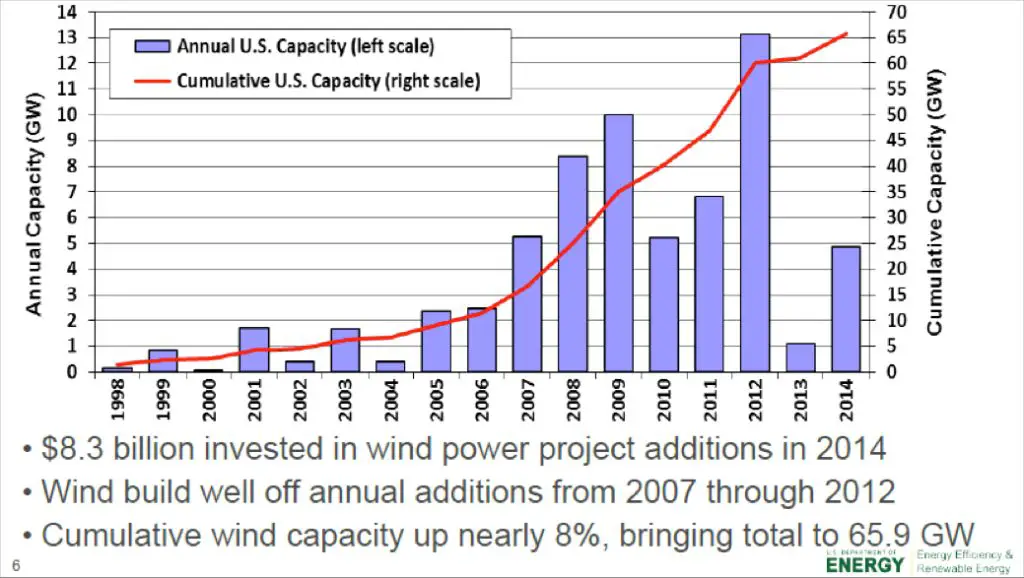
The location of a wind farm has a significant impact on transportation and construction costs. Areas that are more remote or have challenging terrain, like mountains or forests, generally have much higher costs associated with transporting massive turbine components and constructing access roads and turbine foundations (EIA). By contrast, wind farms built on flat, open lands near existing infrastructure can take advantage of lower transportation and construction expenses. According to the EIA, the average cost of a wind project built in the interior region of the United States in 2019 was $1,739/kW, while the cost for a project in the West Coast region was only $1,121/kW, largely due to locational factors.
Areas offshore also have substantially higher costs, with an average global installation cost of $4,346/kW in 2019. This is largely driven by expenses associated with foundations, subsea cables, and higher maintenance costs in the harsh marine environment (EIA). The trend is for newer offshore wind farms to be built further from shore and in deeper waters, which adds to the complexity and requires larger, more expensive turbines.
Land Acquisition
Land costs make up a significant portion of the total cost for a wind farm. Wind farm developers generally acquire land in one of two ways: leasing or purchasing. Leasing land from property owners is the most common approach. According to Landmark Dividend, wind turbine lease rates typically range from $4,000 to $8,000 per turbine per year. Rates are often structured as a percentage of the revenue generated by the turbine or a fixed dollar amount per installed megawatt. Land purchases are less common but sometimes necessary depending on the site layout and project financing. Purchasing land outright involves additional upfront capital costs but gives the developer full control over the land.
In addition to land costs, wind farm developers must obtain the proper permits and zoning approvals. The permitting process involves fees paid to local and state governments. According to the Department of Energy, permit approval rates for U.S. wind projects exceeded 95% in 2020. However, the complex permitting process can add time and uncertainty to project development.
Labor
Labor costs make up a significant portion of the total cost of a wind turbine project. This includes engineering and construction labor to build the turbines, as well as ongoing maintenance labor over the project lifetime. According to the National Renewable Energy Laboratory (NREL), labor accounts for approximately 20% of the initial capital costs of an onshore wind project.
During the construction phase, skilled workers are needed for site preparation, turbine foundation construction, electrical work, and turbine assembly. Wind turbine technicians are also employed for regular maintenance and repairs over the project lifespan. The American Wind Energy Association (AWEA) estimates that a typical wind technician salary is around $52,000 per year.
For a 50 MW wind farm with 25 2 MW turbines, NREL estimates construction labor costs around $5.4 million. On the maintenance side, technician salaries can amount to $200,000-$250,000 per year for a wind farm of this size. Over a 20-30 year lifespan, total O&M labor costs often reach $10-15 million.
Proper planning is essential to control labor expenses and ensure cost-effective wind turbine construction and operation. Hiring experienced, specialized wind energy contractors helps optimize labor productivity.
Maintenance
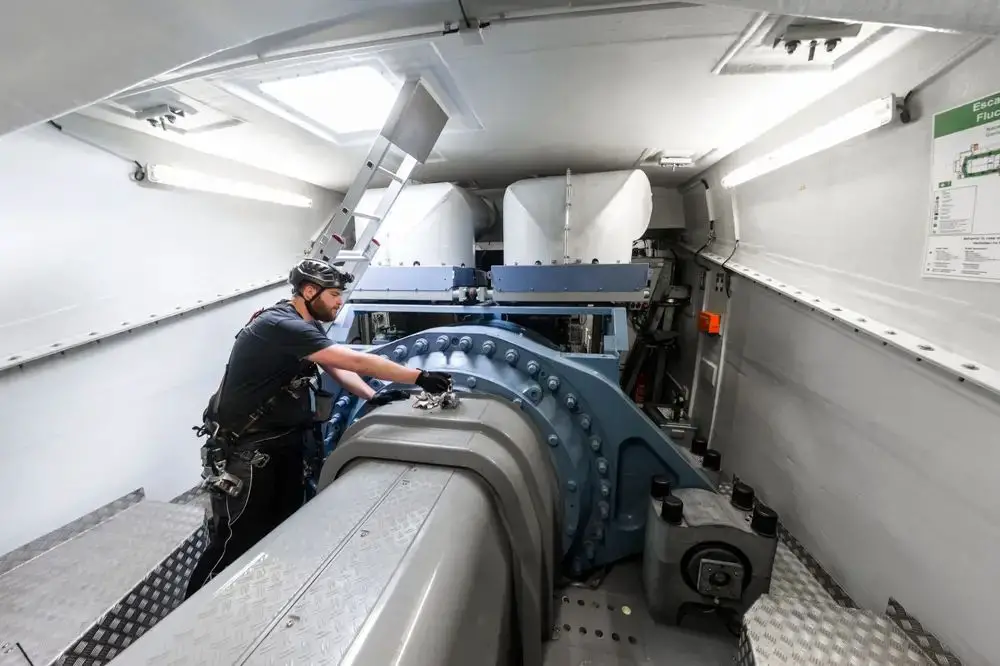
Operating and maintaining wind turbines represents a significant cost over the turbine’s lifetime. According to the European Wind Energy Association (EWEA), operation and maintenance costs for onshore wind turbines are estimated to be around 20-25% of the total levelized cost per kWh produced.
Regular maintenance is crucial to maximize turbine performance and lifespan. Maintenance activities include inspecting components and systems, performing diagnostics, replacing worn parts, and more. Major maintenance is typically required every 1-2 years. Unscheduled repairs may also be needed if issues arise.
As turbines age, repair costs tend to increase. The older the turbine gets, the more susceptible it becomes to breakdowns and the need for replacement parts. Location also impacts costs – offshore turbines tend to have higher O&M costs than onshore ones. Proper maintenance helps minimize lifetime costs and keep turbines operating efficiently.
Total Cost Breakdown
The total cost of a wind turbine can vary significantly depending on the size, type, and location. According to the Department of Energy, the average cost per kilowatt hour for land-based wind power projects installed in 2019 was around $1,400 per kW[1]. However, costs can range from $900 per kW on the low end, to over $2,200 per kW on the high end.
For a 1.5 MW turbine, which is a fairly typical size for a commercial wind farm, the turbine cost would be $1.4 million on average. A smaller 750 kW turbine may cost around $900,000 while a larger 3 MW turbine could cost over $3 million.
The type of tower also impacts costs. Tubular steel towers are more expensive than lattice towers. Offshore wind turbines generally cost more as well due to higher foundations and installation expenses.
Location can significantly influence cost too. Construction and transportation costs tend to be lower in regions like the central United States. Permitting and regulatory costs may be higher in other areas.
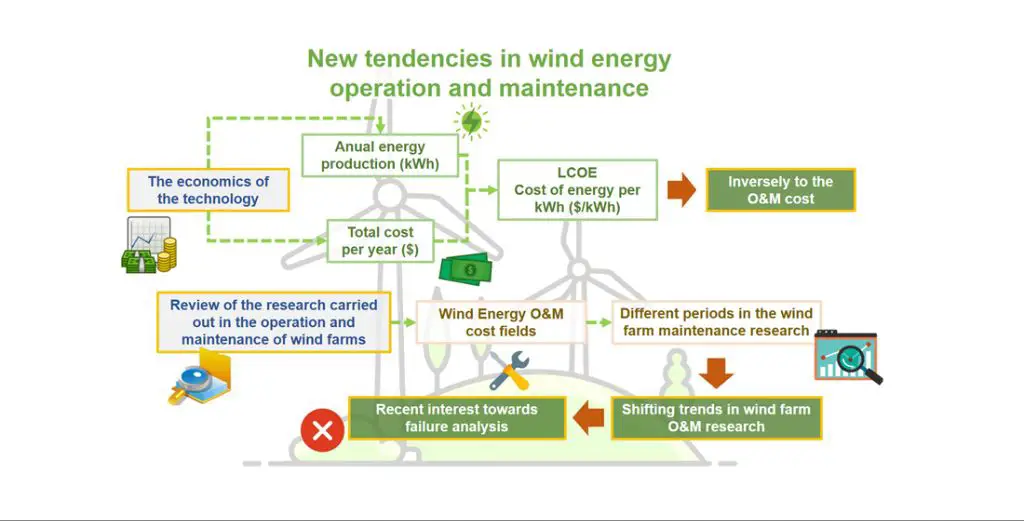
In terms of breakdown, the turbine itself accounts for around 75% of the total project cost. The balance of plant (civil works, electrical infrastructure, etc.) makes up the remaining 25%[2].
Ongoing operation and maintenance costs are estimated at $30-50 per kW per year[3].
[1] https://www.energy.gov/eere/wind/downloads/2021-wind-market-reports
[2] https://www.energy.gov/eere/wind/how-much-do-wind-turbines-cost
[3] https://www.nrel.gov/docs/fy21osti/79155.pdf
Conclusion
There are several key factors that influence the total cost of installing wind turbines, including the size and type of turbine, tower height, location and site conditions, land acquisition, labor, and maintenance. In general, a utility-scale onshore wind turbine will cost between $1.3 million and $2.2 million per MW of capacity. The turbine itself represents about 75% of this cost, while the balance goes toward infrastructure like roads, electrical equipment, construction, permitting, engineering and more. Offshore wind is more expensive at $4 million to $6 million per MW due to higher turbine costs and more complex foundations and installations.
While wind power has become more affordable in recent decades, the upfront capital costs remain high. However, wind turbines have a typical lifespan of 20-25 years. Over the long run, wind energy remains one of the lowest-cost sources of electricity generation when factoring in no fuel costs and relatively low operating expenses after installation.

